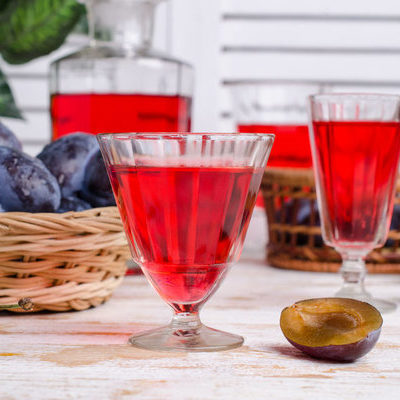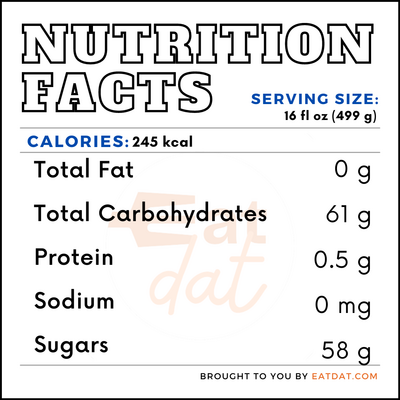
Plum Juice
What is Plum Juice?
Plum juice is the liquid extract from the plum fruit, which people commonly make and consume in their homes. Plum juice is extracted from fresh plums while prune juice is from naturally dried plums. This plum fruit’s color can be:
- black
- red
- green
- orange.
The significant difference between plum juice and prune juice is the way they are made. In 2016, the US generated 135,000 tons of fresh plums from 18,700 acres of land for a total value of $109 million worth of plums.
Some common ways to use this nutritious juice are in:
- Plum jelly
- Canned fruit juice
- Plum jam (with sugar and lemon juice)
- Wines
- Brandy
Origin of plum juice
There are many known species of plums and, therefore, many places of origin for this fruit scattered across the globe. The cultivation of plums began before that of any other fruit, excluding the apple. The earliest scientific sources say that plums originated in China in 470 BC. The Japanese plum also has its origin in China, not Japan. At least two to four centuries ago, this fruit made its entry into Japan and from there spread all over the world.
Sources say that people may have discovered European plums 2,000 years ago near Western Asia or Eastern Europe. The remains of plums have been discovered in ancient sites together with figs, grapes, and olives. Ancient Romans even refer to 300 varieties of European plums in their texts. In the 1700s, pilgrims brought European plums to the United States, which now has its own plum variety. Today, the plum fruit is usually eaten fresh, canned, dehydrated, or juiced.
Nutrition
In 499g serving of juice, you can expect the following nutritional content:

This fruit juice is rich and nutritious. This juice can offer the following health benefits:
- It is rich in fiber, which helps with weight loss.
- The presence of antioxidants in plum juice helps to fight oxidative damage.
- It helps to relieve constipation and also helps the overall digestive system.
- Vitamin B6 in plum juice helps the proper functioning of the nervous system.
- It can be instrumental in maintaining a healthy heart function.
- It can help to strengthen your immune system.
- It promotes a good cholesterol level.
This fruit juice may also have its side effects. Consult your physician to know if it’s safe for you to consume this juice.
- It can increase the incidence of bladder and kidney stones in some people.
- It has a high acid content, which might be unsuitable for certain underlying health conditions.
- It can interfere with certain medications if consumed in excess.
Commercial Production
The large-scale production of this juice is very rare. The high percentage of pectin in plums makes it hard to use to craft cloudy juices, although it is possible. It is also feasible to produce plum juice with small scale equipment. The saturation of plum pulp with enzymes has proven to be a more effective way to press the pulp. However, this premise lies on the basis that the overall quality of the juice should be intact.
Application
Plum juice is easy to make. Simply follow these steps:
- Wash all the plums in clean water.
- Cut them in half to remove their pits.
- Use a high-speed blender to blend the fruit along with ice and water. You could also use a cold-pressed juicer.
- Strain the juice to remove the pulp and achieve a better texture.
- You can decide to blend other fruits with the plum. It all depends on the result you want to achieve.
It is possible to store this juice for two to three days under the right conditions. However, this sweet juice begins to undergo oxidation as soon as it is made. Sunlight and oxygen can increase the rate of this degradation. So, it’s best to store your plum juice in an airtight container inside the refrigerator.
Plum juice recipes
Plum juice brings a world of flavor to many dishes. Here are a few recipes:
FDA regulation
The Food and Drug Administration classifies plum as a raw agricultural commodity. The body is responsible for every aspect of its growing, harvesting, and packing. It also has a standard of identity for canned plums and defines them as food prepared from clean and mature fruits of specific plum species. Their guideline states the suitable and safe ingredients that canned plums can contain. The FDA also recommends fruit juice and water as the appropriate packing media for plum juice. There are also regulations concerning how the product should be labeled and produced.
References
Kailey. “Healthy Plum Juice Recipe (Two Ways).” livingfreshdaily.com, Living Fresh Daily, 18 Oct. 2019, livingfreshdaily.com/Plum-juice/.
Jackson. “10 Wonderful Health Benefits of Plum Fruit – Nutrition & Calories Included.” cashkaro.com, CashKaro Blog, 7 Dec. 2018, cashkaro.com/blog/10-wonderful-health-benefits-of-Plum-fruit-nutrition-calories-included/81539.
“CFR – Code of Federal Regulations Title 21.” Accessdata.fda.gov, U.S Food & Drug Administration, 1 Apr. 2019, www.accessdata.fda.gov/scripts/cdrh/cfdocs/cfcfr/CFRSearch.cfm?fr=145.185.
